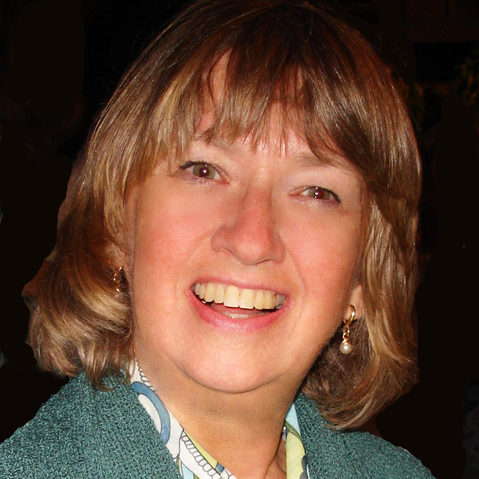
The real-estate industry seemed doomed in March last year. As stay-at-home orders brought North Bay counties to an abrupt standstill, they also put the brakes on business as usual for real estate agents. Then just weeks into the coronavirus pandemic, home sales began to surge, and they were more than a brief spike in activity. It was the beginning of a surprising upward trend in sales, and a year later, the housing market continues to be consistently strong and shows no signs of weakening.
A substantial number of California residents have left for other states in recent years, and that trend also continues. “I see a lot of people moving out of state,” says Allison Norman, a Realtor with Keller Williams in Santa Rosa and host of Mike Kelly’s Real Estate Hour on Sunday mornings on radio station KSRO. Job transfers account for some of the loss, and as older people retire, some move to states where their adult children have put down roots so they can be close to their families. Others leave because the cost of housing is too high, and they can get more for their money in other states and often pay lower taxes. And yet another motivating factor is the political climate.
“There are some people who aren’t very happy with what’s going on in California politically,” says Norman, and so they head to states that are more in keeping with their beliefs. However, while that exodus carries on to some degree, the number of people moving to the North Bay counties now exceeds those who are departing, leaving real estate agents with too few houses to meet the growing demand. “I worried at the beginning that everything was going to fall apart,” says Norman. She was concerned about a viable market without broker tours, open houses or in-person showings, and also with many potential buyers out of work. Instead, though, the opposite happened.
Lifestyle changes
The pandemic has confined people living in urban areas to small spaces, Norman explains, and Sonoma County offers them a chance to have larger homes and outdoor areas where they can move about freely instead of being limited to apartments with small balconies. The desire to leave San Francisco for the suburbs became apparent almost immediately, and at first, the sales process changed considerably. “We were selling houses without even showing them,” she says. The need to move was so compelling for many people that real estate agents began receiving multiple offers from home seekers eager to relocate. She had one listing with 25 offers, and it sold for well above asking price. This is not unusual in today’s market, and real estate markets across the country, especially suburban and rural markets are experiencing a similar phenomenon. Competition for homes has also resulted in offers with low (or no) contingencies, as potential buyers decide they want a house so much that if they find problems, they’ll fix them on their own, and they’ll bring in extra cash if the appraisal comes in low.

Low-interest rates, providing the opportunity for more people to afford homes, along with the higher-than-usual migration from the city, has local buyers competing with out-of-area buyers. Norman reports that she recently sold a lot in Fountaingrove, where the Tubbs fire destroyed a home in 2017. Neighbors bought the lot from the owners after the fire, had a house designed, obtained permits and then sold the property with approved plans. “The clients got a construction loan with a crazy, low-interest rate,” she says. “When buyers can’t find the home they’re looking for, or the competition is too high, they’re getting creative. We’re seeing an increase in residential land sales as well.” Even when buyers have cash, she adds, many don’t use it, preferring to take advantage of favorable interest rates instead.
Marie Hoch, a Realtor with Coldwell Banker in Novato, sees a similar trend in Marin County, and she observes that buyers seem to have a sense of urgency that energizes them to make big decisions. “The pandemic is a compelling event,” she says, pointing out that because people can work remotely, they have the freedom to live wherever they want, and that gives them more options. They’re looking for the best kind of housing they can afford. Most want single-family dwellings, but will buy townhouses or condominiums if they fit their budget better. She adds that clients coming from San Francisco typically used to have young families, and they were looking for good schools as well as more space. Now, though, she’s seeing young couples who don’t yet have children. “They thumbed their noses at the suburbs before, but now the suburbs are trendy,” she says. In addition, they’re used to high rents in the city, so Marin doesn’t seem overly expensive, and low interest rates make buying affordable.
Marty Wickenheiser, a real estate agent with Berkshire Hathaway Home Services/Drysdale Properties in San Rafael, observes that the ability to work remotely and the recognition that a different lifestyle is within reach are creating interest in the North Bay. “During the pandemic, the way people view homes has changed,” she says, explaining that buyers are looking for amenities such as space for home offices and swimming pools, as well as increased outdoor spaces. They’re spending more time in their homes, and with a long commute out of the picture. “There has been a surge in Marin and especially Sonoma County with buyers from the city.”
Demand and supply
While observations from agents working directly with clients is a source of anecdotal evidence, data confirms the trends they identify. Rick Laws, regional vice president of Compass in Santa Rosa, whose expertise is Sonoma County, prepares an annual report on the local market, and he reports that 2020 started off looking much like any year. “Then COVID showed up, and you can see a dip in sales,” he says. In the beginning, with restrictions in place, it was very difficult to show property, he explains, but then real estate became an essential service, and buyers who wanted to leave San Francisco and Silicon Valley for homes with more space drove business to the North Bay counties and other Bay Area suburbs. “That’s what I call a COVID bounce. We didn’t see that coming,” he says, adding that by the time 2020 was in the books, increased sales had more than made up for the initial losses.
“What surprised everyone is that the definition of home and what buyers wanted and how strongly they wanted it has changed,” he says. Currently, people are seeking backyards, where kids can build forts and run around, and home offices are essential, says Laws, because they’re part of the dynamic that makes working at home possible. Space for remote learning for children whose schooling is on Zoom is also a consideration. Thus, three- and four-bedroom, single-family dwellings are in demand, and while the largest number of houses sold in Sonoma County in 2020 was in Santa Rosa and Petaluma, the biggest increases in sales were in communities near the water and in rural areas. Coastal communities saw a jump of 40 percent from January 2020 to January 2021, followed by the City of Sonoma, where sales grew by 26.2 percent.
Norman finds that many clients are looking for homes near the river, in coastal towns, or in areas throughout the county with a Wine Country feel. “What’s selling right now is large parcels, homes with great outdoor spaces, extra space for at-home schooling, and a home office or two,” she says. Guerneville, Sonoma Coast, Sebastopol, Sonoma and Healdsburg are popular shelter-in-place locations, and many people are looking for primary residences. Others want second homes, where they plan to spend most of their time, while keeping condos in the city. (A reversal of the way they used second residences in the past.) In addition, smaller single-level homes remain in demand and sell quickly because they’re often more affordable for people buying their first home and are also attractive to seniors who are downsizing.
“What surprised everyone is that the definition of home and what buyers wanted and how strongly they wanted it has changed.”—Rick Laws, regional vice president, Compass
Along with sales, prices increased, with most single-family homes selling in the range of $500,000 to $799,000. “That’s the affordable price range,” says Laws, but he points out that a significant number of homes listed for $800,000 and up also sold. He explains that some sellers are divesting themselves of properties, many of them potential vacation or second homes at the higher end, and the equity is more valuable than usual.
Finding enough homes to meet the need, however, is a challenge. When the surge started, plenty of houses were available. “[But] we rapidly depleted that inventory,” says Laws. He anticipates more houses becoming available when Proposition 19’s provision allowing people who sell their homes to transfer their tax base value goes into effect. “It gives freedom to people who would like to move to other areas of the state, but don’t want to give up their tax base,” he says. He believes that people will continue to leave the North Bay as well. “Some people who are selling are just tired of the fires and tired of the PG&E shutoffs,” he says. Political and social unrest weighs on people too, and if they feel their quality of life hasn’t improved, they might decide to sell and settle elsewhere. Nonetheless, buyers currently outnumber sellers, and as long as demand exceeds supply, prices are likely to continue rising.
New methods
The pandemic has changed the way people buy houses as well. Wickenheiser explains that prospective buyers have to sign a COVID waiver before they can enter a property, and they only take the time to do so if they’re serious. There are additional changes in the industry. “No broker tours or Sunday open houses eliminate those who are looking for decorating ideas,” she says, and without brochure boxes, anyone interested in a property must contact a realtor or the listing agent.


Colbert equates the current situation to 2017, when 5,000 people lost homes in the Wine Country wildfires, and many bought replacements when they received insurance checks. “There was a boom,” he says, and the same thing happened in 2020. This time, though, clients are new to the North Bay. Recently he sold a house to a couple from San Francisco who were looking for a dream home to fix up. One was a frontline doctor in a busy hospital in the city, who lived down the street in a condominium with his wife. He began to feel that he couldn’t breathe. “He needed to get out of that urban area,” says Colbert. They bought a house in West County, but kept the condo, he spends most of his time now in their new Sonoma County home. He points out that the pandemic has changed many peoples’ perception of what’s important, and homes and the environment have become priorities. “That definitely benefited us,” says Colbert. “Our phones haven’t stopped ringing.”
Most houses have lock boxes so real estate agents can show them, but Compass also provides information so buyers can research a property themselves. Each home has an electronic folder with tax reports, photographs, a home’s history and how much neighboring properties sold for, as well as a high-quality video and photos of the whole area taken by drones. “It’s almost like a 3-D tour. You feel like you’ve been in the place,” Colbert says, explaining that top-quality professional photography and videography is essential. “It’s really intuitive,” he adds, so clients can put all the data on a computer or phone, and he receives notification when they like a property, so he can follow up and check to see if they’d like a tour. Thus, technology is the key to showcasing a property and getting a client’s interest. “After that, it’s all about the person-to-person contact. I can’t see technology ever taking the place of an agent,” says Colbert.

Economic impact
The reallocation of people from urban areas to San Francisco gives reason to be optimistic about the local economy. The long-term effect, however, depends on the nature of the demographic change. Robert Eyler, Ph.D., professor of economics at Sonoma State University, gives the example of a couple ready to retire selling their home to a working family, resulting in a higher-spending family taking the place of a lower-spending family. It’s a realistic scenario in the current circumstances, but whether it’s permanent or temporary is an open question. “Current claims by CEOs about working remotely could be ephemeral, and the flow could change in the opposition direction,” he says. Some employees might decide to return to San Francisco, he points out, if employers change their minds and require them to return to the office.
“People can get more bang for the buck in housing in the North Bay versus core Bay Area locations. If you don’t have to be close to work and can pay two-thirds the cost for twice the house, especially with the current low-interest rate, it’s an appealing option,” he says. At the moment, newcomers can’t get to know their neighbors and community, but if they do stay, the result will be a big demographic shift, with young families who populate schools and take part in activities such as Little League and Girl Scouts outnumbering a large population of older people. “It’s a dynamic and intriguing time. It’s been good in the sense that it’s provided a shift that’s good in terms of the workforce and economic development,” says Eyler. “We’re getting it by default through the real estate market,” he adds, but whether it will stick is unpredictable.
“People can get more bang for the buck in housing in the North Bay.”—Robert Eyler, Ph.D., Sonoma State University and Marin Economic Forum
Hoch observes that home and family have taken on new meaning for people during the pandemic, and her clients often tell her that it has forced them to reassess what’s important in their lives. “Most of us are feeling things more intensely because we have fewer distractions. Since we are all stuck at home, our feelings about home are more intense and top of mind. This intensity and lack of competing interests spurs people to take action,” she says. She finds that people are really emotional, and emotions motivate them to make changes. Only time will tell, but if new residents continue to prioritize home and family, and they begin to form attachments in their new communities, those changes could well be permanent. If they are, real estate will emerge as a leader in the North Bay’s economic recovery, and as Rick Laws predicts, “It will be the driver leading us out of the economic hole.”
Proposition 19
Proposition 19—officially titled The Home Protection for Seniors, Severely Disabled, Families and Victims of Wildfire or Natural Disasters Act—changes some of California’s property tax rules. Among them, it allows property owners defined by the act to transfer their primary residence’s property tax base value to a replacement residence of any value anywhere within the state. It passed with 51 percent of the vote in the November 2020 election. The provision governing base year value transfer goes into effect on April 1.
Source: California State Board of Equalization
At Home in Napa
Gabe Scoggin and his wife were in their early 30s, working for technology companies in Silicon Valley and living in San Francisco several years ago. When they decided to start a family, they decided to leave city life behind and move to Los Altos to shorten their commute. Their son was born in late 2017, and their daughter arrived in February 2020, and a few weeks later, they realized it was time for a change.
“We were two adults, a toddler and an infant trying to get through the pandemic,” he says. Both he and his wife were working at home and felt trapped. They weren’t fond of the area and began to wonder why they were living there. “It very quickly became evident that we had to do something,” he says, and they began to look for a house in the North Bay. He had spent his adolescence in Mill Valley, and they considered Marin County first. Then they settled on Napa. His parents had moved there after he left home, and he had spent summers with them. He and his wife had also vacationed and were married in Napa. “We liked the community. We have very good memories here,” he says. Also, his parents were just 25 minutes away in Benicia, and Napa was affordable, as well as being the kind of community where they would like their kids to grow up
They purchased a home in Brown’s Valley on the west side of the city, and their offer was one of 11 and above asking price. It wasn’t the highest offer, but their real estate agent, Joe Brasil, convinced the sellers that it was the best, and their mortgage is less than the rent they were paying in Los Altos. The house is 2,500 square feet, and they paid less than $1 million. “It has a wonderful character and lovely backyard. … It’s a quaint little place,” says Scoggin. It was built in the 1950s, remodeled in the 1990s and belonged to members of the first owner’s family. “We liked the fact that it had been a family home for three generations,” he says. The neighborhood vibe is also appealing. They didn’t know anyone in Los Altos, but within days, all their new neighbors, who also have small children, had welcomed them. In addition, they found Le Petit Elephant Nursery and Preschool nearby and find it to be a lifesaver.
“We don’t know what the next chapter is going to look like for our lives,” he says. The cost of living is high, and they don’t have much expendable income, and so their plan is to continue in their current jobs. His wife’s employer has informed her that working remotely is here to stay, but his company plans to adopt a mixed model with some days in the office and others working remotely. He’s considering taking the ferry from Vallejo to San Francisco or driving to Novato to get a shuttle to Silicon Valley or staying at his brother’s apartment in San Francisco on office days. “A lot remains to be seen in terms of what that will mean for our family long-term,” he says. Meanwhile, they’re happy in Napa and find it vastly preferable to Silicon Valley.




